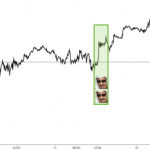A reader asked me about “Bond Vigilantes”. There aren’t any, but there is a record number of speculators.
A reader asked me about ‘Bond Vigilantes’ after reading this article: ‘Bond Vigilantes’ are Saddled Up and Ready to Push Rates Higher.
This is complete silliness. There are no “Bond Vigilantes”.
Fundamentally, there is no way to dump holdings to enforce “fiscal discipline” because someone has to hold every bond issued until it comes to term.
However, there is a record speculative building up against bonds in the futures market.
Hedge Funds Push Record Bets Shorting Treasuries
Bloomberg reports Hedge Funds’ Biggest Short in Bonds Faces Make-or-Break Moment.
Hedge funds and other large speculators are more convinced than ever that the 2018 bond-market rout will resume in the days ahead.
The group, known for trading on momentum, boosted short bets in 10-year Treasury futures to a record 939,351 contracts, according to Commodity Futures Trading Commission data through Feb. 6. That means the violent market moves on Feb. 5, when the Dow Jones Industrial Average suffered an unprecedented drop and 10-year yields fell almost 14 basis points, weren’t enough to dissuade wagers that rates are headed higher. The next gut-check comes Wednesday, with the latest read on consumer prices.
Speculators’ positioning matters because it can push momentum to extremes, and can serve as a contrarian indicator since these traders are among the quickest to switch directions when prices turn against them. By contrast, longer-term holders like asset managers are seen as more likely to stay the course. Their net long in 10-year futures is the highest since October 2015.


















Leave A Comment